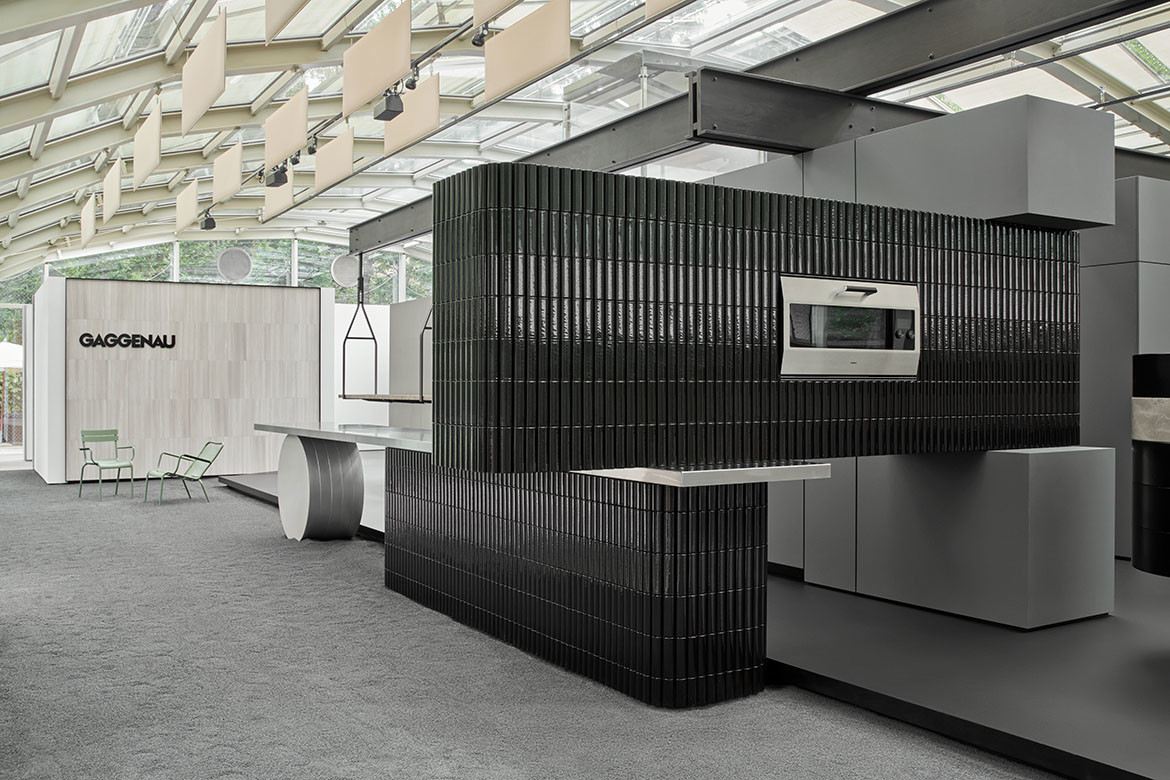
It’s no small feat to present a display that makes the hustle and bustle of Milan Design Week fade away. Yet Gaggenau seems to have achieved the impossible, with its extraordinary installation at Villa Necchi Campiglio designed to provide a welcome respite from the business of the fair.
“Sometimes, in a world filled with noise, the most memorable thing one can achieve is the rare moment of silence,” says David Nicholson, Director of RN + S, who visited Gaggenau’s exhibit, as well as the brand’s headquarters in Germany. “And that’s what Gaggenau managed to accomplish. I didn’t see any other installations that were as memorable. There were some wonderful displays, but they all blurred into the noise.”
Story continues below advertisement
The setting for Gaggenau’s first Milan Design Week display played an important role in creating the ambience of alluring tranquillity. “Even during regular times, Villa Necchi Campiglio is a real oasis in the middle of a very busy city,” David says.
“And with the Milan Design Week on, and so many people competing for your attention, walking through the entrance to the villa and its gorgeous gardens puts you in a completely different frame of mind. I think it was quite a bold and intentional move on Gaggenau’s part.”
Spanning 33-square-metres, “A Statement of Form” installation saw what used to be the villa’s tennis court transformed into an architecturally designed space defined by beautifully presented, artful craft. The exhibit was designed to put all that goes into creating a Gaggenau appliance on display in an elevated and deconstructed way. This intent manifested through a masterfully curated balance of tradition and avant-garde, heritage and progress, art and technological advancement – as well as form and function.
Story continues below advertisement
While the dynamic tension between the past and present was charmingly underscored by the traditional architecture of the villa, the exhibit itself was carefully brought to life by the team of exquisite design and culinary experts Gaggenau partnered with.
The intricate geometry of the installation was designed by the renowned German architects, 1zu33, and layered with striking materiality curated by the ceramic tiles manufacturer, Kaufmann, and natural stone masters from Italy, Salvatori. Christian Jürgens, a three Michelin star ‘Restaurant Überfahrt’ chef and Gaggenau’s long-standing partner, curated the culinary side of the experience.
Story continues below advertisement
Elevated by the craft and mastery of Gaggenau’s collaborators, the multifaceted installation provided an inviting and engaging space to unwind, connect and exchange ideas, with its striking amalgamation of textures and bold shapes taking the space well beyond a traditional product display. “It wasn’t that at all,” David explains. “It was a stunning sculpture, with Gaggenau products subtly incorporated throughout.”
David brings up an element of the installation cantilevered off of a balanced system of forms that caught his eye immediately after arrival. “It was a beautiful surface featuring handmade, textured black glossy tiles with their scale altered to perfectly suit the dimensions of the 900 Series Oven sitting at the centre of the robust form. It was such a subtle and stunning thing to do.”
Further enhancing the theatrical dynamism of the exhibit, Gaggenau’s ovens were powering a glass tube filled with steam, while the chefs used the appliances to create exceptional culinary experiences, demonstrating cooking precision and exploring the relationship between cooling and heating. “It all felt incredibly connected,” David describes the unpretentious spectacle. “There was no front or back to the installation, you could just wander around and take it all in.”
The intention for the exhibit to be a place where architecture and design professionals could share experiences and exchange ideas was reflected in the fact that the installation served as a backdrop to Q&A sessions with a range of experts from different fields, ranging from architecture and design to pig breeding.
“The spatial design worked really well. The stage felt like a part of the installation, which made the talks feel intimate and casual rather than too formal,” David adds.
With such consideration going into each and every element of the exhibit, even the floor surface echoed Gaggenau’s unique brand of excellence. The grey gravel which resembled tennis court clay – perhaps a nod to the original heritage of the space – further enhanced the sensory experience. “It wasn’t just interesting to walk on,” David points out, “It was also an amazing sound absorber which, again, made the display quiet against Milan’s bustle.”
This notion of quiet confidence has been unique to Gaggenau’s timeless expression since the brand came to be in 1683. For almost 350 years now, Gaggenau has been revolutionising our relationship with kitchen appliances and cooking, as well as our homes – all while maintaining a firm sense of identity.
“What has always attracted me to Gaggenau is its timeless character,” David shares. “Gaggenau doesn’t follow the fleeting design trends, and is very confident in what it does. The brand has been around for such a long time, and it definitely feels like it’s going to be around for much longer.”
Gaggenau’s very first Milan Design Week exhibition is a stunning expression of the brand’s enduring character and as proof that it’s the self-assured, dynamic stillness that often leads to revolutionary, and memorable moments.
Gaggenau
gaggenau.com.au